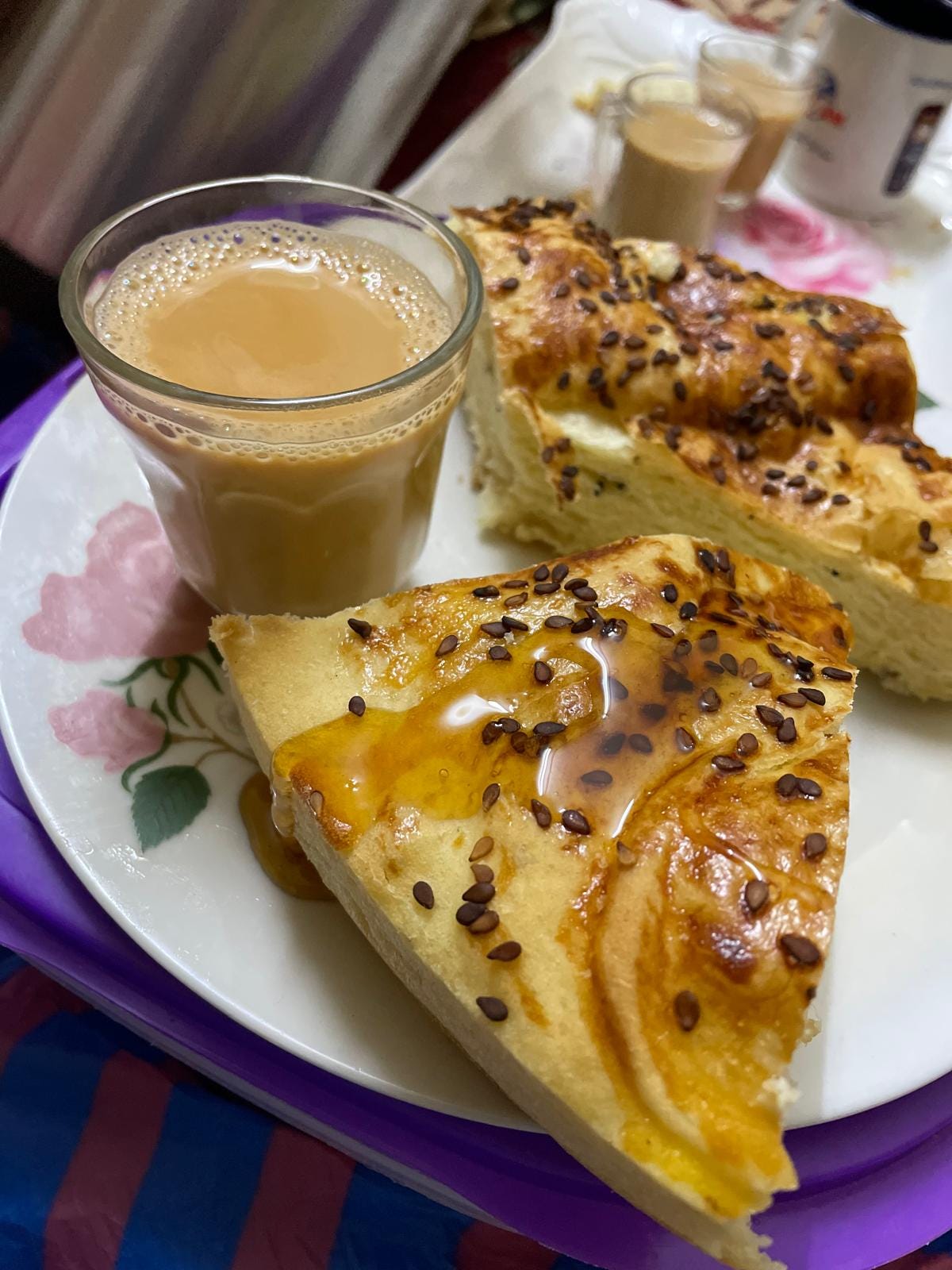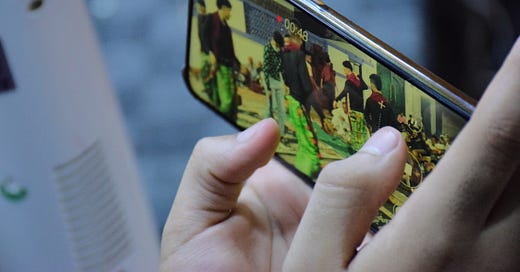Three-day Wedding: #1 Sunday
The street in Aden that became a dance floor, the dancers with green mawaz, and more Yemeni traditions.
When Biko and I got married, we had a three-day wedding in Yemen.
The first celebration was in the street, just in front of the family house, and it was only for the men. Biko had purposefully chosen this location before a hotel venue so that the women in the family could see the celebration from the balcony and all men in the neighborhood could join without needing an invitation.
The music band arrived at six in the morning to set up the stage. They blocked the street and in just a few hours they carpeted the sidewalk and turned the asphalt road into a dance floor. Soundchecks, lights, and curious neighbors outside the house; flowers, food, and bakhur inside. As it is usual on special occasions, the routine was disrupted, and a combination of nervousness and excitement filled the air of the entire neighborhood.
By seven in the evening, everyone was ready. The guests in the street were anxious to greet the groom, but the women celebrated him first with a Yemeni dance in the intimacy of the family. I remembered well the first time I had danced the traditional Yemeni tune a few years earlier. When we first started dating, one day our Yemeni friends began to dance in the living room of the New Jersey apartment, and I quickly picked up the rhythm. The dancers move three steps forward and three steps backward in a straight line. I am not a dancer, but I know how to follow a tune, and the Yemeni dance seemed easy, at least these basic first steps. Like most people from my generation in Argentina, I grew up dancing often, at the family dance parties in the local sports association, in our backyard on Christmas Eve, and in the many traditional 15th birthday parties that last all night. I never thought my upbringing dancing cumbia would turn out to be this useful after so many years and so far away from home.
That hot Adeni night, the youngest boys in the family were struggling to follow the pace and Biko was failing miserably when trying to teach them how to dance. I stepped up and walked in between the two nephews. I was hopeful my lack of Arabic language skills wouldn’t be a problem and, with one boy on each side, I signaled to them to follow my feet. One, two, three, one, two, three; going forward and backward. I was following the boys’ feet that were finally dancing when I heard the laughter and the applause. I looked up and the family had formed a circle around us. What a hilarious scene! It took the Yemeni boys an Argentinian bride to learn the Yemeni dance.
An hour later it was finally time for Biko to join the party outside. He walked out the front door escorted by his brothers, his nephews, and the group of dancers, one of them carrying a huge golden mabkhara with bakhur. They were all wearing mawaz, a traditional skirt for men, and a matching scarf that some wear on their shoulders and some on their heads. In front of the stage, the groom’s chest was decorated with a flower-made necklace, and he showed his moves to the cheering crowd.
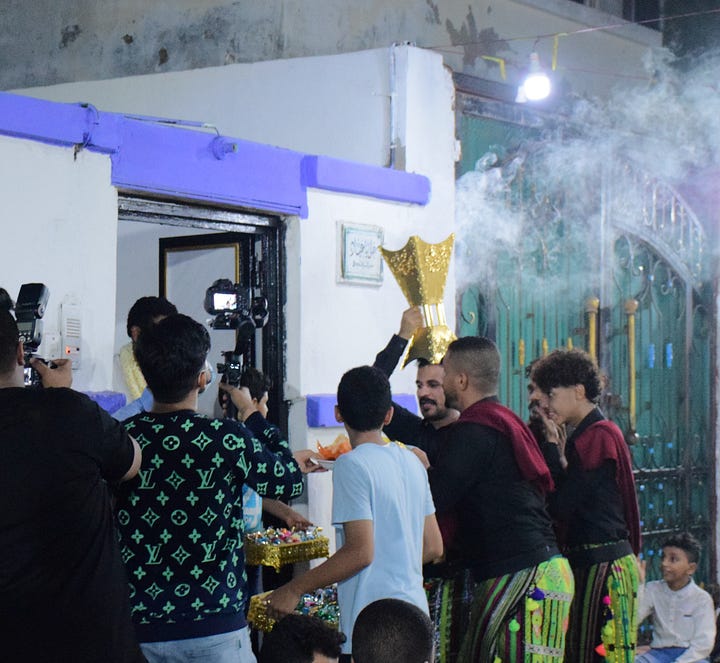
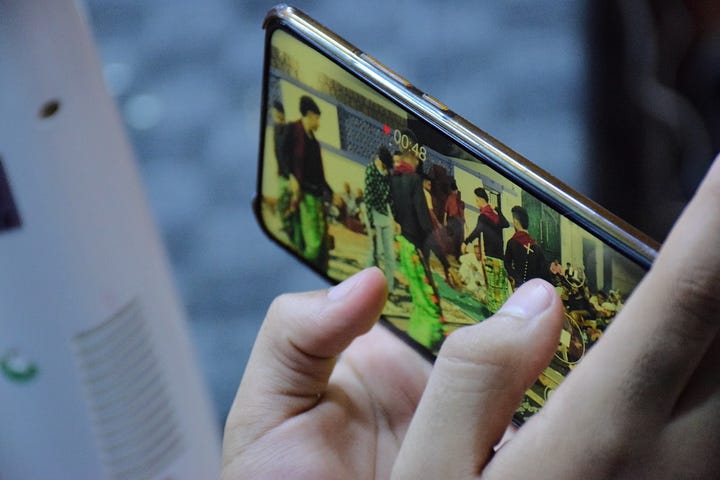
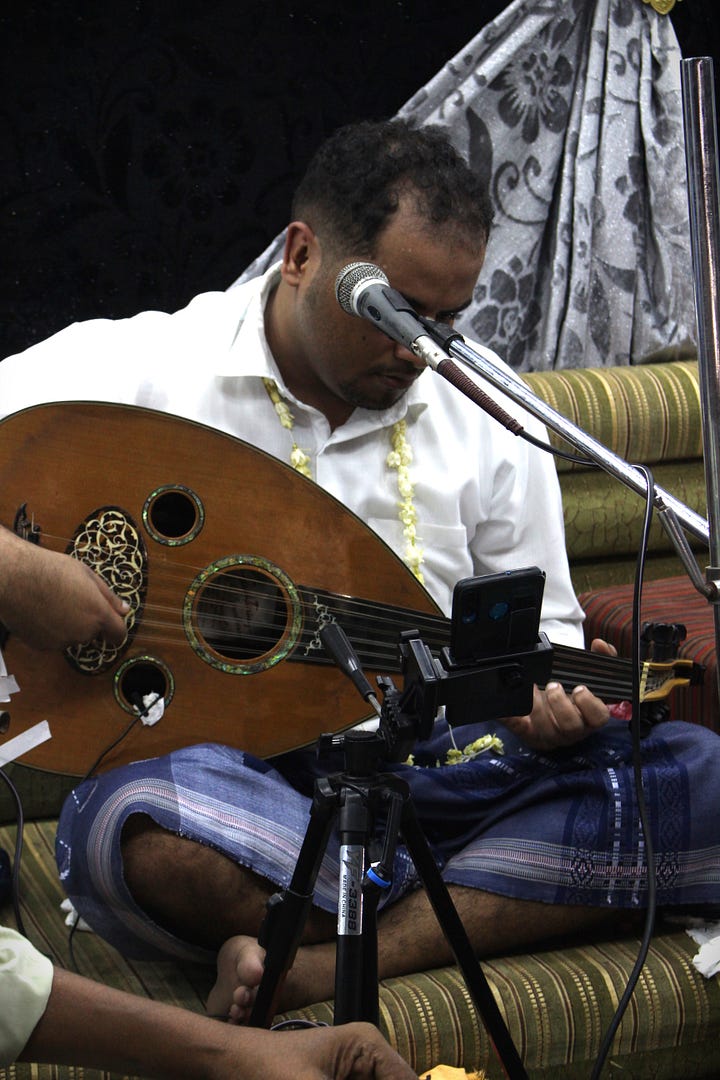
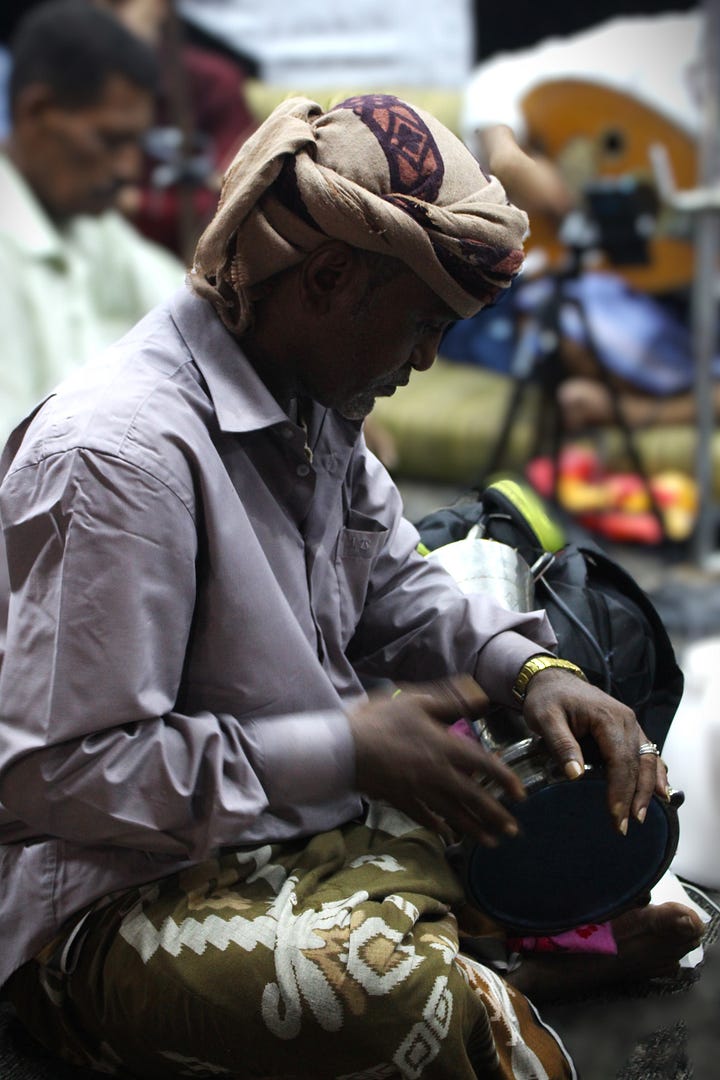
Behind the burka covering my face, my eyes were attentive to every detail from the balcony. The coordinated movements of the dancers’ green mawaz, the deep voice of the singer, and the clapping of the musicians encouraging even the shyest men in the crowd to join the dance.
By eleven that night, Biko came back to the house to change clothes and a few minutes later he went out the front door again. This time, the dancer escorting him was not carrying a mabkhara with bakhur, but a tray with henna1. Following the tradition, Biko was taken to the middle of the dance floor, and family and friends took turns covering his skin and hair with the dark and slimy henna.
“They are having fun just like I did with my friends when I graduated from college”, I thought, overwhelmed by memories.
In Argentina, there’s a tradition of throwing eggs, flour, and rotten food at graduating students. I know it sounds disgusting, but it’s meant to be celebratory. After so much effort at university, which can take six to seven years to finish with most students working full-time and studying part-time, we would welcome any kind of celebration, even the smelliest ones. The difference with my home country’s tradition is that in Yemen they don’t waste eggs and flour, they don’t smell like rotten food, and they don’t struggle to remove the dirt from their hair after the party. In their case, doing henna on their wedding day gives Yemeni men an inviting smell and a soft skin, as if they got a spa beauty treatment for their brides.
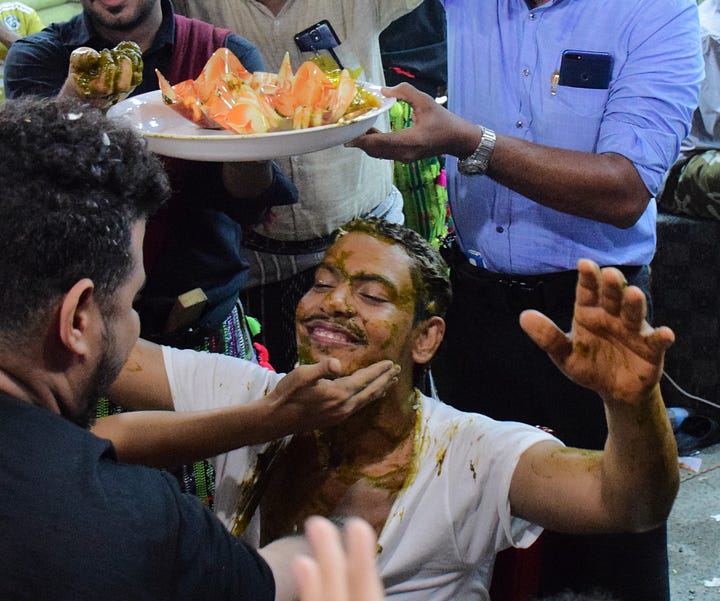

After midnight, when all the guests had already left, the first in a series of three wedding celebrations ended with the family enjoying sabaya2 and Adeni tea. Biko’s niece loves photography and asked everyone to pose for the camera. She got the settings ready for an automatic shot and ran to find her spot among the smiling group. We heard the ‘click’ and the special moment was captured for posterity.
Thank you for reading me today.
Until the next story.
Pia
>> If you’ve enjoyed this story, you can share it with others who you think might enjoy it too.
>> If you haven’t subscribed yet, and would like to read more about my trip to Yemen, you can subscribe below. I share a new story every other weekend.
Henna is a natural dye from the Lawsonia inermis (or Henna) tree. It has many uses in Yemen and throughout the Arabian Peninsula. In addition to perfuming, dyeing and softening the skin and hair, in a city as hot as Aden, henna is also used to cool the skin.
How can I explain what sabaya is? It might be easier if I share a photo with you. It’s a type of bread that you must have with Yemeni honey on top. Here’s the recipe if you’d like to give it a try. Let me know if you do!
